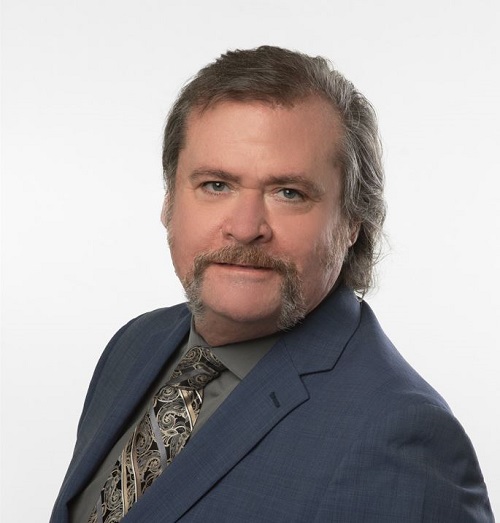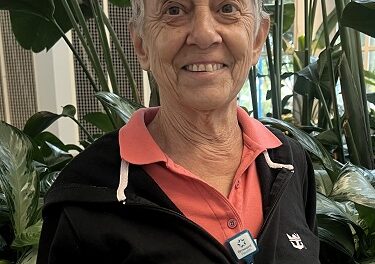By William A. Cavanagh
Cesium-131 is defining modern brachytherapy. It is emerging as an effective alternative for many cancer patients and offers an important option for Florida doctors and the patients they treat. Originally gaining prominence as a powerful, efficacious treatment for prostate cancer, Cesium-131 brachytherapy is now showing impressive results in other cancer treatment applications that previously had limited treatment alternatives. Cesium-131 brachytherapy is increasingly being used to treat a variety of hard-to-treat cancers throughout the body including brain, head and neck, lung, and gynecological cancers as well as other aggressive and recurrent tumors.
In Florida, Dr. Michael W. McDermott, Chair of the Division of Neurosurgery and Chief Medical Executive at the Miami Neuroscience Institute, Baptist Health South Florida, has extensive experience in the use of Cesium-131 brachytherapy for the treatment of brain metastases and recurrent atypical and malignant meningiomas.
Widely known for advancing neurosurgical techniques, Dr. McDermott noted some of the advantages, “If you just reoperate on recurrent meningiomas after prior surgery and radiation therapy, the likelihood of recurrence is high. There is no effective chemotherapy for recurrent meningiomas at this point and repeated external beam radiation is not a suitable treatment paradigm. Cesium-131 offers an important local treatment option. It has a short half-life and short energy path which means a more conformal dose distribution within the resection cavity and delivers a reduced dose to the surrounding brain. With its permanent encapsulation in titanium, there is no chance of dissemination of the radioactive sources to other parts of the brain or body.”
The preeminent neurosurgeon sees opportunity for patients. “It’s a safe and effective alternative treatment for recurrent malignant meningioma and brain metastases. It’s been previously under-utilized, and I am glad there is increased recognition of its utility, safety, and effectiveness. Patients can have surgery and Cesium-131 treatment in one procedure. Because the skull absorbs most of the radiation, it makes it safe for patients to be discharged and be around family members without any particular concerns,” said Dr. McDermott.
Dr. Chad Zender is a nationally recognized expert in head and neck cancers who has seen the benefits of Cesium-131 brachytherapy. Dr. Zender, Associate Chief Medical Officer, University of Cincinnati Health, and Professor Department of Otolaryngology, University of Cincinnati College of Medicine spoke to Cesium-131’s unique qualities. “I think it’s most important in patients who have had previous radiation or chemo-radiation that have a tumor that is amenable for additional therapy. It can be used in conjunction with surgery in the recurrent setting to help improve local control and decrease the damage to other tissues. Even in patients that have had prior chemo-radiation or radiation, this is an additional targeted radiation that can deliver a meaningful radiation dose and doesn’t result in the kind of damage we see from traditional re-radiation in our experience. Preliminary studies are exciting on Cesium-131 for head and neck and are showing promise which is why we are continuing to pursue its use in the head and neck in the current recurrent setting.”
Dr. Zender commented on the value for patients. “From my perspective, Cesium-131 is a promising additional therapy that can decrease the chance of their cancer returning without compromising quality of life and function as traditional re-irradiation does. The head and neck are critical to our quality of life, and we must try to preserve functions like sense of taste, swallowing and facial expressions which are so important when interacting with loved ones. Anything we can do to help patients survive without compromising those important functions is going to be of benefit to the patients.”
Cesium-131 has been extensively used to treat prostate cancer and has proven to be a highly customized and effective treatment for the rapid recovery of patients. Dr. Bernard W. Taylor is the longest tenured radiation oncologist at Texas Oncology of the US Oncology Network. He has been performing LDR Prostate Brachytherapy since 1996 and has used all the available sources in his career.
Dr. Taylor pointed to his unique viewpoint regarding Cesium-131 brachytherapy, “I had prostate cancer treated with LDR Brachytherapy using I-125, so I speak as a patient as well as a physician. For patients, it is important to also look at its impact and the other critical aspect which is patient quality of life. With Cesium-131, they are not going to have the long-term urinary side effects, which I experienced, that they would have with iodine-125, which is 6 to 9 months, or the long side effects with palladium-103 and they will recover faster than they would with other sources.”
Dr. Taylor had this message for Florida physicians. “There is always a fear to change your protocol as a physician when you are comfortable with an established approach. You shouldn’t be fearful to change to Cesium-131 because of the advantages that I see clinically and because I learned firsthand that using Cesium-131 really didn’t change my process at all. I think it offers the right energy level to take care of cancer, the shortened half-life so side effects are less and delivering the dose faster, which I believe improves outcomes for prostate cancer. We may never prove that clinically, but I believe it is better and it is certainly better for high-risk patients.”
With over ten years of data on Cesium-131, researchers continue to expand study of its value in addressing cancers. Numerous trials and studies are underway looking at mounting treatment options involving Cesium-131 brachytherapy and its application for the treatment of a variety of cancers throughout the body. One that will be watched with interest given the rapid approach of an era of immuno-oncology, involves the addition of pembrolizumab (Keytruda) to the regimen of Cesium-131 brachytherapy with surgical resection. The trial begins the exploration of the opportunity for synergy between Cesium-131 radiation therapy and modern immunotherapy or immune checkpoint inhibitors.
William A. Cavanagh is the Chief Research and Development Officer, Isoray, and may be reached at (206) 595-8568 or b.cavanagh@isoray.com.


























